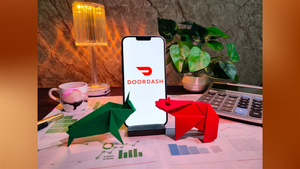Webinar Recap: Engaging Supply Chain on Scope 3 for Strategic Advantage
SOURCE: Antea Group
DESCRIPTION:
For most companies, Scope 3 greenhouse gas (GHG) emissions created throughout the supply chain are by far the largest contributor to their overall carbon footprint. Because Scope 3 emissions are indirect, they are hard to control or even influence, making them a weak link in Environment, Social, & Governance (ESG) strategy and performance. With increasing expectations around ESG performance and ambitious goal-setting (e.g., science-based targets), carbon footprint is being scrutinized for companies of all sizes, meaning companies that can reign in Scope 3 emissions have a strategic advantage when it comes to ESG. However, this process is often experienced as a “squeeze,” where companies are simultaneously feeling pressure to reduce their own emissions as suppliers to their major customers while putting pressure on their supply chain to reduce its footprint.
In a recent webinar, Peylina Chu, Senior Vice President at Antea Group, Jing Zhang, Senior Advisor at the Value Reporting Foundation, and Mandi McReynolds, Senior Director of ESG at Workiva, discussed how companies can plan for, develop, and implement Scope 3 reporting.
If you missed the webinar, don’t worry! You can still watch the full presentation on-demand.
What are the different types of emissions?
Scope 1 and 2 emissions are known as operational emissions. Scope 1 emissions are direct emissions from owned or controlled sources, such as company facilities and vehicles. Scope 2 emissions are indirect emissions from the generation of any purchased energy.
Scope 3 emissions are known as supply chain emissions. Supply chain emissions are all indirect emissions that occur in the value chain of the reporting company, including both upstream and downstream emissions. Examples of upstream activities include purchased goods and services, fuel and energy-related activities, waste generated in operations, business travel, and employee commuting. Examples of downstream activities include processing and use of sold products, transportation and distribution, and investments.
Why should companies care about Scope 3 emissions?
Scope 3 emissions are 11.4x higher on average than Scope 1 and 2 emissions for most companies, which means companies that do not report Scope 3 emissions are missing the bulk of their emissions data. Scope 3 emissions are part of the puzzle of understanding the supply chain and therefore supply chain risks. Scope 3 disclosures have grown in recent years, and TCFD shared that 54% of respondents disclosed Scope 3 emissions in 2021.
The SEC recently proposed a new Climate Disclosure Rule that will require climate-related disclosures covering a range of topics loosely aligned with TCFD starting in 2024, covering 2023 activities. Companies will be required to disclose Scope 1 and 2 emissions, and one year after initial disclosures companies will be required to disclose Scope 3 emissions.
There is no need to adjust disclosure strategies at this time, but companies should start preparing for the Climate Disclosure Rule by performing gap analysis on emissions data, participating in the open feedback process for the SEC and ISSB Climate Standard, and assembling your teams related to disclosures to approach the change calmly.
How companies can develop a Scope 3 inventory
Scope 3 disclosures are difficult to calculate compared to Scope 1 and 2 disclosures, as calculating Scope 3 emissions are like calculating someone else’s emissions outside of the organization. It is fair to expect that many large corporations will request emissions data from their suppliers to develop their Scope 3 inventory.
When developing a Scope 3 inventory, it is important to recognize where you have the most influence and control. The first step is engaging stakeholders to determine what is most valuable to the business, followed by a materiality assessment. Workiva, a global software-as-a-service company, for example, focused on travel, upstream leases, data centers, and employee commuting as important areas that could influence the success of the company as a whole.
Bringing together the necessary tools
The importance of data in disclosing Scope 3 emissions cannot be overstated. The biggest challenge to Scope 3 disclosures is around data. It is always better to start data collection early to address any potential problems. Depending on whether a supplier discloses their data to you determines if you need to collect or estimate data. It is important to know that in situations where data has not been disclosed, there may already be internal data that you can potentially leverage for estimating.
Long term trends show that eventually everybody will need to calculate and report their emission data. It is likely that we will reach a point where end customers require carbon footprint data at the product level. It is crucial to explore the platforms that allow you to do analysis, and make sure that the data and process maps are put together for your sustainability and financial teams.
Looking forward
Scope 3 disclosures are more than just a compliance exercise. By engaging with suppliers on Scope 3 emissions we can build out the standards and increase climate-related opportunities. There is no easy way to collect Scope 3 emissions, but there is a lot to learn and there are many opportunities for cross-functional cooperation.
For help getting started, reach out to our Sustainability experts today.
About Antea Group
Antea®Group is an environment, health, safety, and sustainability consulting firm. By combining strategic thinking and multidisciplinary perspectives with technical expertise, we do more than effectively solve client challenges; we deliver sustainable results for a better future. We work in partnership with and advise many of the world’s most sustainable companies to address ESG-business challenges in a way that fits their pace and unique objectives. Our consultants equip organizations to better understand threats, capture opportunities and find their position of strength. Lastly, we maintain a global perspective on ESG issues through, not only our work with multinational clients, but also through our sister organizations in Europe, Asia, and Latin America and as a founding member of the Inogen Alliance.
KEYWORDS: antea group, supply chain, Scope 3, sustainability, esg

More News
View More




Recent Quotes
View More
Quotes delayed at least 20 minutes.
By accessing this page, you agree to the Privacy Policy and Terms Of Service.